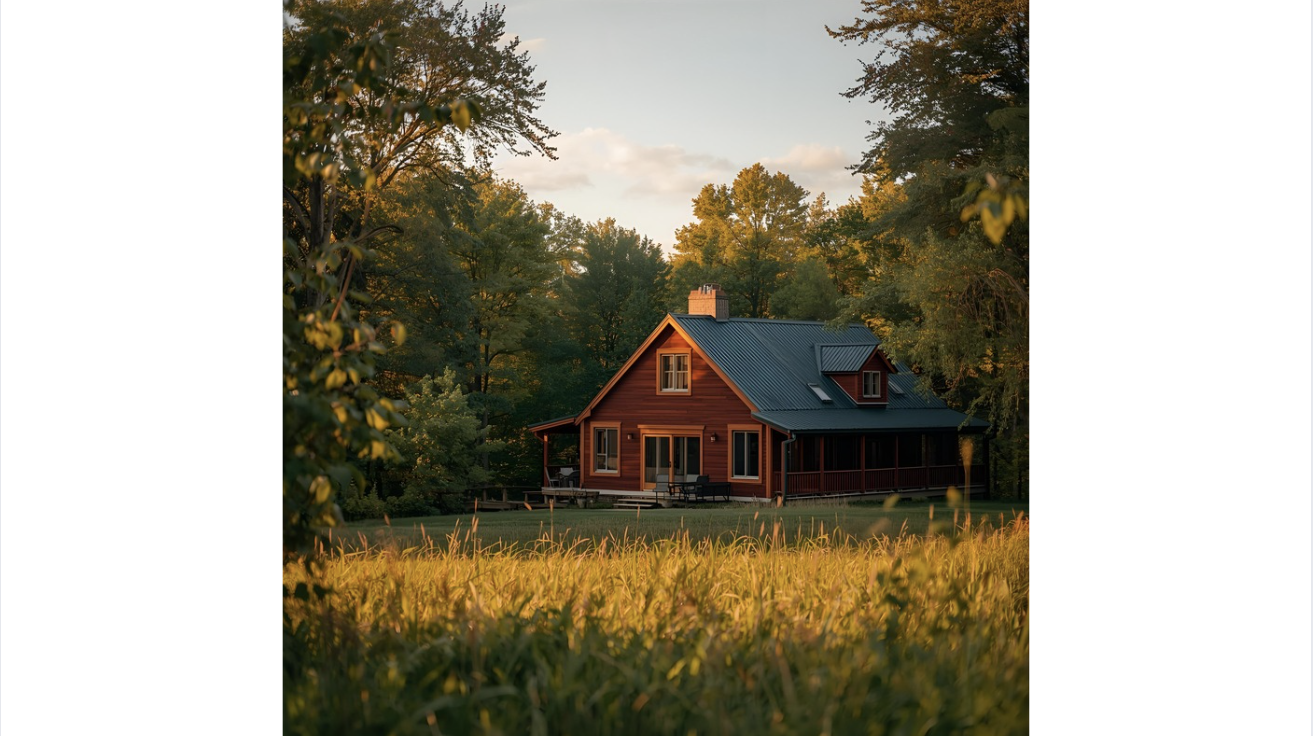Short‑term rentals (STRs) continue to evolve across Vermont, just as in many parts of the U.S. Travelers are increasingly seeking mountain escapes, ski resort getaways, foliage retreats, and small‑town charm. As these focuses shift, a number of Vermont towns are standing out for their rental demand, pricing power, and investment potential. Below, we detail five of the top STR markets in Vermont as of 2025—why they shine, what metrics support them, and what to watch out for.
How We Selected These Markets
To identify the top towns, we focused on several key criteria:
Average Daily Rate (ADR) and occupancy — ability to gather premium nightly rates and keep homes booked
Gross revenue potential — what STR owners are earning relative to property values
Regulatory environment — what permitting, zoning, licensing/permitting risk exists or is emerging
Tourism / guest appeal — proximity to resorts, nature, outdoor recreation, seasonal draw, as well as event/tourism infrastructure
Barriers to entry / property cost vs upside — how expensive properties are, what returns look like after costs, how crowded the market already is
1. Stowe, VT — Best Luxury / Mountain Resort Market
Why it stands out
Stowe remains Vermont’s luxury ski and four‑season resort town. It has a strong brand, well‑developed infrastructure, year‑round drawing power (skiing, hiking, foliage, recreational amenities), and guest expectations that support premium rates. For investors looking to position in top‑tier properties, Stowe often leads the list.
Key Metrics
Average Daily Rate (ADR): approximately $478/night at the 75th percentile of listings.
Annual revenue for high performing listings: ~$66,473.
Occupancy: around 40‑45% (resort towns tend to have high ADRs but more seasonality) for many luxury property listings.
Property values are high: average home sale prices in Stowe are among the highest in the state.
Strengths & Opportunity
Brand & appeal: Stowe attracts both domestic and international visitors who are willing to pay for high‑quality lodging, amenities, and scenic views.
Four‑season demand: It’s not only winter; summer, fall foliage, hiking, mountain biking, and scenic retreats help smooth demand across the year.
Premium pricing with fewer competitors: Because Stowe is expensive to develop and maintain, supply tends to be more controlled; fewer low‑end properties compete, helping maintain higher average rates.
Upside for well‑renovated or boutique units: Guests expect quality in a resort town. Unique offerings (mountain views, luxury finishes, excellent guest services) tend to outperform.
Risks & Watch Points
High entry cost: The purchase prices are steep; for many investors, capital outlay is large. Financing, maintenance, insurance, and operational costs are also higher.
Seasonality & occupancy variation: While the ADR is high, off‑peak months (late winter after ski season, mid‑summer in some cases) can see reduced demand. Cash‑flow projections must account for idle periods.
Regulatory & licensing pressure: Stowe has recently instituted a short‑term rental registry (May 2025) to require safety, ownership, and management information. Town authorities are watching data (e.g. how many units are non‑resident owned) and considering further regulation.
Affordability pressures & community pushback: As STRs grow, local concern about housing access, infrastructure strain, and neighborhood impacts could drive stricter ordinances or caps.
2. Killington, VT — Best for Strong Seasonal Ski Demand
Why it stands out
Killington is one of Vermont’s big ski draws, with one of the longest ski seasons, strong resort traffic, and lots of ancillary demand (restaurants, winter sports, summer trail‑based demand). For investors focused on high ADRs during peak winter period and willing to accept lower mid‑season occupancy, Killington is very appealing.
Key Metrics
ADR: ~$498.79/night in Killington’s STR listings.
Monthly revenue ranking: Killington is #2 in VT according to AirROI, behind Stowe.
Occupancy: lower than resort towns year‑round, often ~30‑35% when averaged, due to seasonal variation.
Strengths & Opportunity
Strong winter draw: Skiers flock to Killington in season; properties near the lifts or with strong winter amenities (ski‑in/out, hot tubs, cozy interiors) do well.
Opportunity in shoulder seasons: Summer hiking, fall foliage, weddings, and events help fill in demand gaps if you market well.
Resort infrastructure & guest expectations: The presence of resorts tends to mean the services (restaurants, guides, transportation) are in place, which helps STR hosts.
Potential to specialize: Luxury, mid‑luxury, or even rustic but well‑positioned cabins or lodges could carve niches if done well.
Risks & Watch Points
Off‑season downtime: Many properties will be idle or low‑booked outside ski season; operating costs continue during those periods.
High maintenance & operational costs: Snow removal, heating, wear & tear from extreme winter weather are nontrivial.
Competition: Many short‑term rental hosts target Killington; quality differentiation matters.
Regulation / local policy: As skiing towns grow, regulation of STRs tends to follow: licensing, parking, occupancy restrictions. Stay ahead of local ordinances.
3. Rutland, VT — Best Emerging / Mid‑Cost Market
Why it stands out
Rutland offers a more affordable entry into the Vermont STR market, with rising demand and increasing awareness among travelers. It’s becoming a go‑to for investors who want upside without the ultra‑luxury price tag. The cost per property tends to be lower, which can improve return on equity if revenue is managed well.
Key Metrics
ADR in Rutland: approximately $322/night for strong listings (75th percentile).
Occupancy: about 46% for those stronger listings.
Annual gross revenue for those listings: around $40,000 (75th percentile).
Average home values are lower compared to resort towns, making the entry point more accessible.
Strengths & Opportunity
Lower entry cost: You may get more square footage or nicer locations for less money compared to resort towns.
Growing awareness: As travelers seek value and non‑crowded destinations, towns like Rutland are rising in popularity.
Flexibility: If you choose properties with appeal both in summer and winter, you can spread risk.
Potential for value‑add: Many properties in Rutland may be less polished; renovations, good furnishings, guest experience investments can yield high marginal returns.
Risks & Watch Points
Lower brand pull: Rutland does not have the international destination clout of resorts; attracting off‑state or international guests may require more marketing.
Occupancy volatility: Mid‑sized markets often suffer more during off‑peak periods.
Local regulation: Rutland is in process of evaluating local ordinances for STRs; being proactive in compliance matters.
Operational infrastructure: Depending on the area, guest amenities, high‑speed internet, local services may be less robust, so investing in quality matters.
4. Burlington, VT — Best Urban & Year‑Round Demand
Why it stands out
Burlington is Vermont’s largest city, with a mix of university, tourism, business, and nature‑adjacent demand. It tends to have more consistent year‑round bookings, more diversified guest types (students, business people, leisure travelers), and generally less extreme seasonality compared to ski/resort‑only towns.
Key Metrics
Occupancy: ~51% for many strong listings.
ADR: ~$265.67/night on average in many listings.
Monthly revenue: Burlington appears in the top 5 by revenue in Vermont
Strengths & Opportunity
Consistent demand: University events, cultural festivals, lakefront tourism, winter visitors who want mild urban comfort.
Higher amenity expectations but deliverable: Urban lodging tends to require nicer interiors, professional listing and services, but these investments often pay back.
Lower seasonality: While there are peaks, off‑season isn’t as sharp a drop as in ski towns.
Better access: Transportation, proximity to airports or larger markets, shops and restaurants—which guests value.
Risks & Watch Points
Regulatory restrictions: Burlington has stringent rules for STRs—owner‑occupied requirements, licensing, etc. Some whole‑unit non‑resident listings are restricted.
Higher costs: Urban real estate tends to cost more per square foot, taxes may be higher, maintenance costs (heating, wear) may be increased.
Competition: Because of the favorable profile, many investors eye Burlington. To compete, listings must be well‑run, well‑listed, with excellent reviews.
Noise / neighborhood concerns: Urban areas often have more sensitivity to STR impact on housing stock, parking, neighbors’ complaints.
5. Jeffersonville, VT — Best Small‑Town / Mountain Vibes
Why it stands out
For those preferring quieter, smaller‑town STR markets with charm and access to resort or natural attractions (but without the scale of Stowe or Killington), Jeffersonville is strong. It’s close enough to major ski resorts (notably Smugglers’ Notch), yet it offers more affordability (relative to resort town benchmarks) and a guest demographic that seeks authenticity and escape.
Key Metrics
ADR: ~$316/night (75th percentile) for Jeffersonville listings.
Occupancy: about 55% for those higher‑performing listings.
Annual gross revenue for top quartile listings: approximately $45,197.
Strengths & Opportunity
Mountain proximity with lower cost: Close to popular skiing, hiking, nature, but not always paying the extreme premiums of major resorts.
Small‑town appeal: Many guests prefer quieter, less crowded towns; good trails, charm, local culture help.
Opportunity to optimize guest experience: Because there are fewer listings, strong UX (excellent photos, design, amenities) tends to stand out.
Potential for growth: As travel spreads out and people look for new or less‑crowded destinations, towns like Jeffersonville are rising in awareness.
Risks & Watch Points
Seasonality: Many guests visit during ski season or summer; shoulder seasons may see slowdown.
Service logistics: In smaller towns, cleaners, maintenance, management may be harder to schedule or may charge more.
Regulation and local rules: Even small towns are enacting STR ordinances (caps, registration, occupancy / parking limits). Knowing those beforehand is essential.
Guest expectations: Despite being “small town,” amenities, reliability, and internet access are still expected; falling short can hurt reviews.
Honorable Mentions & Rising Towns
Ludlow, VT — STR metrics are strong for some listings; may offer value if you find well‑located property.
Dover, VT — Popular as a resort adjunct; but local regulation discussions are active.
Warren, VT — Scenic mountain valley appeal, increasing interest for travelers looking for quiet escapes.
These towns are worth watching or considering, especially if your budget, risk profile, or investment style allows for exploring a broader set of towns.
Tips for Making STRs Work in Vermont in 2025
To turn the promise of these towns into profitable STR ownership, consider the following best practices:
Underwrite Conservatively
Always model revenue using realistic occupancy (not peak) and allow for off‑season slowness. Include all costs: maintenance, heating, snow removal, insurance, property management.Check Local Regulations Before Purchase
Know town ordinances, licensing rules, parking, safety requirements, owner occupancy restrictions. Changes are common and can materially affect your ability to operate or property value.Focus on Guest Experience
Clean, well‑decorated, strong wifi, well‑stocked amenities, easy check‑in/out. Especially in smaller towns, those qualities differentiate.Manage Seasonality
Try to capture demand in both high and shoulder seasons. Offering winter and summer packages, adjusting pricing, or promoting off‑peak perks can help.Build Local Support & Stay Compliant
Engage with community and town governance, follow registry requirements, maintain safety standards. Being seen as a responsible host helps avoid backlash and regulatory risk.Use Data Tools & Local Knowledge
Platforms like AirROI, SummerOS, Rabbu provide valuable data on cleanliness, rate trends, occupancy, and competitive listings. But you’ll also want to talk to local property managers, neighbors, or hosts in target towns to understand nuances.Plan for Exit or Conversion
If rules change, demand drops, or operational burdens grow, you’ll want to be able to convert your property to long‑term rental or sell without massive loss. Flexibility is important.
Here’s a quick snapshot to help you decide which Vermont town might best suit your investment goals, risk tolerance, and budget:
| If you want… | Best Town to Focus On |
|---|---|
| Premium luxury, brand recognition, highest ADR | Stowe |
| Strong ski resort seasonal income | Killington |
| Emerging value with lower entry cost | Rutland |
| Urban, year‑round demand with diverse guest base | Burlington |
| Small‑town charm with proximity to resorts | Jeffersonville |
Each of those towns offers attractive opportunities. The key is aligning the town’s profile with your own goals.


